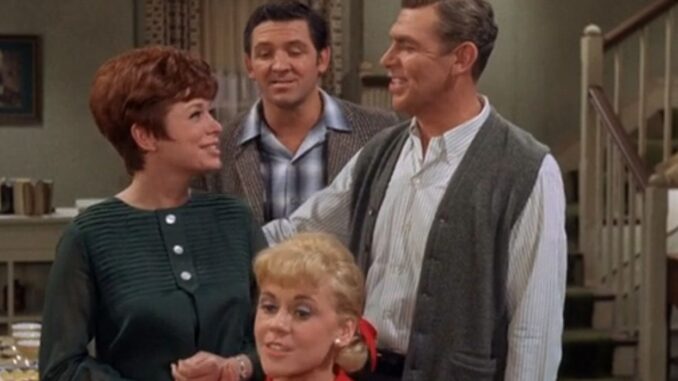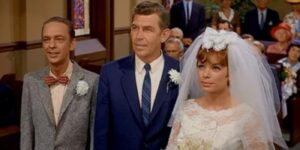
Introduction
Let’s step back into the gentle, whistle-filled streets of Mayberry, where Andy, Barney, Opie, and Aunt Bee charmed millions for eight seasons. But here’s the burning question: how did ‘The Andy Griffith Show’ actually end? Did the series wrap up with a big farewell? Or did it quietly slip away while no one was paying attention? If you’re curious about the final days of one of America’s most beloved sitcoms, buckle up. We’re diving deep into the last chapter of Mayberry.
The Show That Defined Small-Town America
Before we get to the ending, let’s remember why this show mattered. ‘The Andy Griffith Show’ (1960–1968) wasn’t just another sitcom. It captured a simpler time, with wholesome humor, moral lessons, and a pace that made you feel like you were sitting on Andy’s front porch sipping sweet tea.
Why ‘The Andy Griffith Show’ Didn’t Get a Grand Finale
Here’s the twist: there was no big final episode. Surprised? You’re not alone. Unlike shows today that go out with flashy sendoffs, ‘The Andy Griffith Show’ ended without fanfare. The last episode aired on April 1, 1968, titled “Mayberry R.F.D.” — and it wasn’t really about Andy at all.
The Transition to ‘Mayberry R.F.D.’
The final season cleverly pivoted the focus from Andy Taylor (Andy Griffith) to Sam Jones (Ken Berry), a new character introduced to carry on the Mayberry spirit. The final episode served more like a soft launch or backdoor pilot for the spinoff series ‘Mayberry R.F.D.’ than a true goodbye to Andy and the gang.
Andy Griffith’s Personal Exit Decision
Why did Andy Griffith leave? Well, after eight seasons, Andy was simply ready to move on. He wanted to return to other acting projects and, truthfully, was feeling burned out. Rather than wrapping the show with a final bow, he handed over the reins, and Mayberry lived on — just without him.
What Happened in the Final Episode?
In the last official episode, titled “Mayberry R.F.D.”, the town’s attention shifts to Sam Jones, a widowed farmer. The plot revolves around his efforts to join the town council, marking the start of the spinoff. Andy, Opie, and Helen are there, but they’re no longer the central figures.

Fans Felt Robbed of Closure
Many fans have since said they felt cheated — no wedding for Andy and Helen, no farewell party for Barney, no emotional goodbyes. Imagine reading a beloved novel only to discover the last chapter is missing. That’s how some viewers felt when the series just morphed into something else.
Barney Fife’s Gradual Fade-Out
Speaking of Barney, Don Knotts’ character had already been phased out by the end of the series. Knotts left after the fifth season to pursue a movie career, only returning occasionally for guest appearances. So, by the final episode, the beloved bumbling deputy was mostly a memory.
Behind-the-Scenes Reasons for the Quiet Ending
Why no big finale? It was partly a business decision. CBS saw a way to keep the profitable Mayberry franchise going without the original star. So, instead of ending things dramatically, they smoothly shifted viewers to ‘Mayberry R.F.D.’ without making a fuss.
Andy and Helen’s Wedding: A Missed Opportunity
One of the biggest complaints from fans is that Andy and Helen never got their on-screen wedding. While they marry off-screen between the original show and the spinoff, viewers never got to see the big moment. Talk about a missed TV milestone!
How Did Audiences React at the Time?
Interestingly, most viewers at the time didn’t see it as an abrupt ending because ‘Mayberry R.F.D.’ picked up right where things left off. But in hindsight, modern fans, binge-watching the series on DVD or streaming, notice the lack of a satisfying conclusion much more sharply.
What Happened to the Cast Afterward?
After the show, Andy Griffith continued acting, later starring in ‘Matlock’, which became another major hit. Ron Howard (Opie) went on to become an Oscar-winning director. Frances Bavier (Aunt Bee) retired to North Carolina, living a quiet life away from Hollywood.
Legacy of the Show’s Ending
Despite lacking a finale, the show’s impact endures. ‘The Andy Griffith Show’ remains a classic example of warm, character-driven television. Its reruns continue to attract new generations, and the absence of a final episode hasn’t tarnished its reputation.
Could There Have Been a Better Ending?
Looking back, could the writers have crafted a more satisfying sendoff? Maybe. But part of the charm of Mayberry is that it feels timeless, as if life there keeps rolling along, even if the cameras stop rolling. Maybe we never needed a goodbye.
Modern Audiences and the Craving for Closure
In today’s TV landscape, we expect finales that tie up loose ends, answer burning questions, and give every character their moment. But in the 1960s, that wasn’t the norm. Shows ended quietly, leaving viewers to imagine what happened next.
Conclusion
So, how did ‘The Andy Griffith Show’ end? Quietly, almost unnoticeably, without the fanfare modern audiences expect. It transitioned smoothly into ‘Mayberry R.F.D.’, passing the torch to a new generation without dwelling on farewells. Even without a grand finale, the show’s heart, humor, and homespun wisdom live on, making sure Mayberry remains forever in America’s nostalgic memory.
5 Unique FAQs
1. Did Andy Griffith regret leaving the show?
Andy Griffith never publicly expressed regret. He wanted to move on to other projects, though he always spoke fondly of his time in Mayberry.
2. Why wasn’t there a proper finale for the show?
Back in the 1960s, finales weren’t as common as they are today. CBS also planned to continue the franchise through ‘Mayberry R.F.D.’, so they didn’t see the need for a formal ending.
3. Did Barney Fife return in the final episode?
No, Don Knotts (Barney) wasn’t featured in the final episode, as he had already left the show as a regular after season five.
4. How did Helen and Andy get married if we never saw it?
Their wedding happened off-screen between the end of ‘The Andy Griffith Show’ and the start of ‘Mayberry R.F.D.’, leaving fans to imagine the details.
5. Where can I watch the final episodes today?
You can find the final episodes, including the soft transition to ‘Mayberry R.F.D.’, on DVD collections or streaming platforms that carry classic TV shows.
